Dashboard Overview
Keep track of your ETH validators performance via Blockdaemon Ethereum Dashboard.
The Ethereum dashboard is your go-to tool for monitoring and managing the performance of your ETH validators.
Why Use the Ethereum Dashboard?
- It gives you a comprehensive view of all your staked ETH tokens from one user-friendly interface.
- It simplifies your staking experience by providing real-time insights and performance metrics.
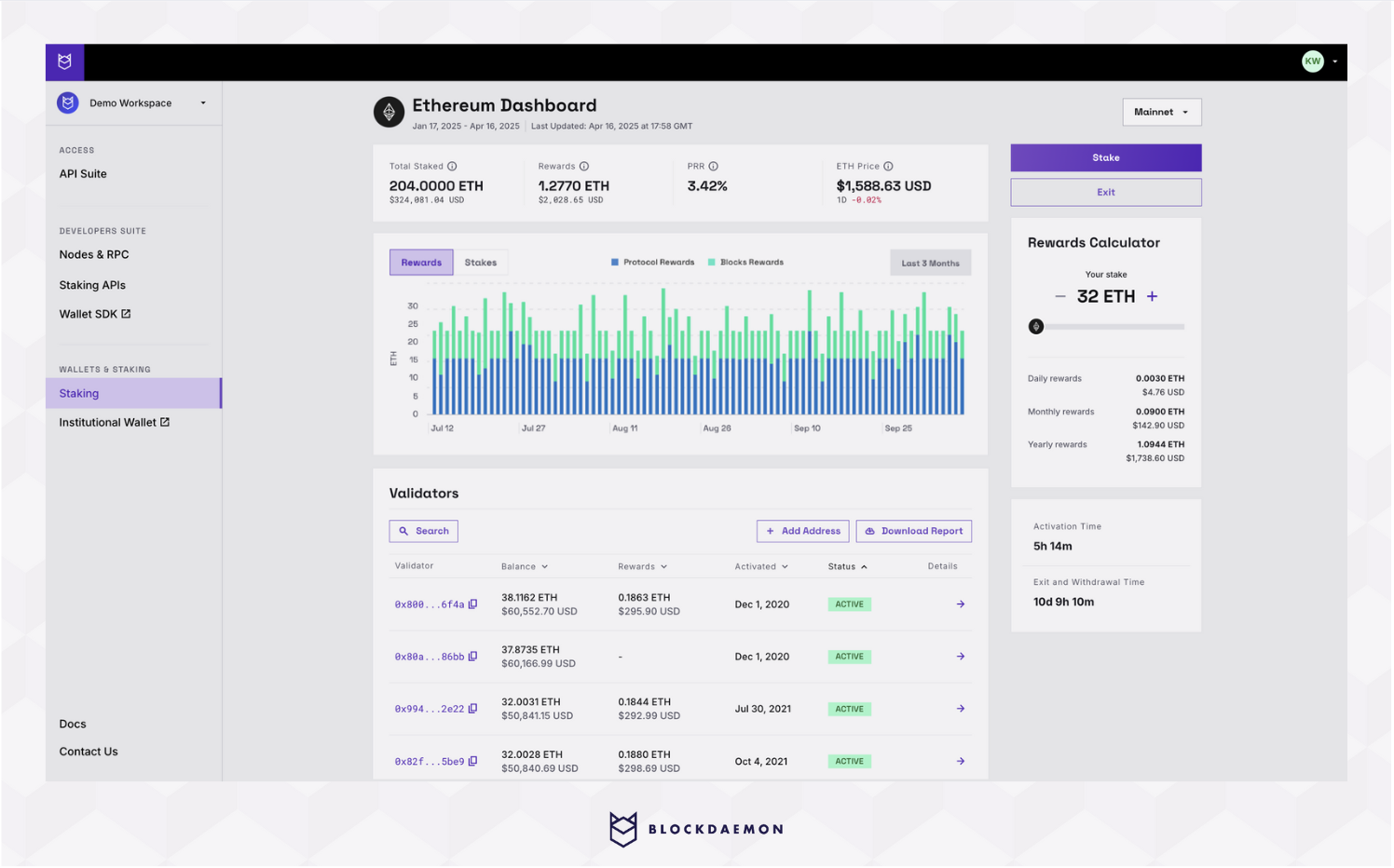
1. Data Timeframe
The dashboard and all associated charts, tables, and reports present a 90-day view of your tracked staking activity. Updated Ethereum rewards data is passed to the dashboard every epoch (approximately every 6 minutes).
2. Network
We support Ethereum Mainnet & Hoodi.
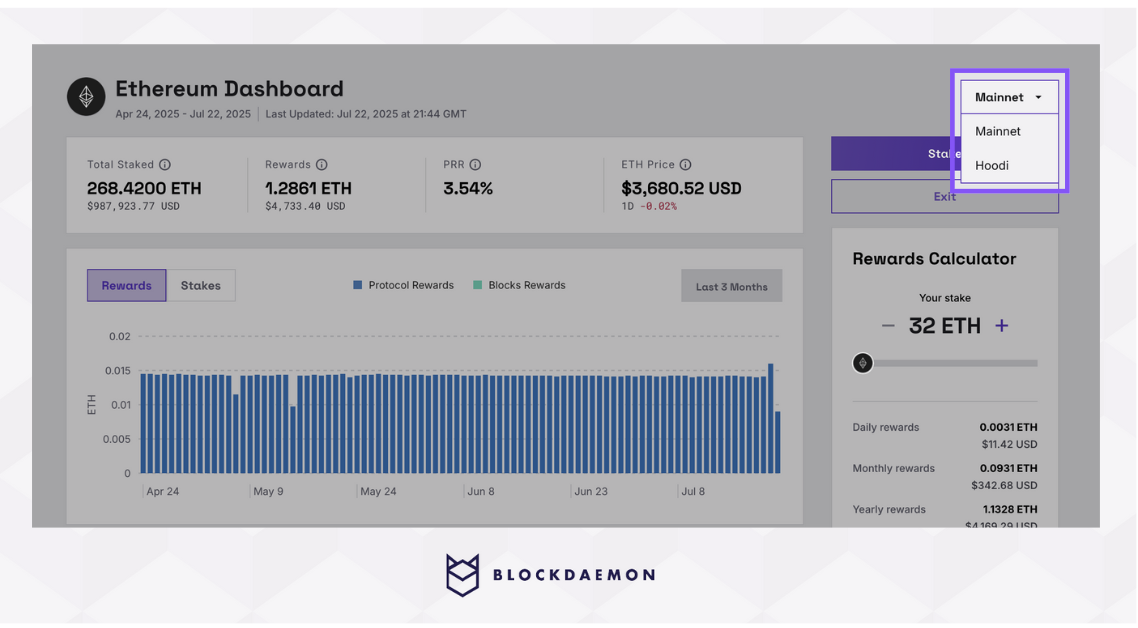
3. Summary Metrics
Get a snapshot of information with the Summary Metrics, including:
- Total Staked: The total amount of ETH currently staked across active tracked validators. This may include rewards that have not yet been sent to the withdrawal address or fee recipient.
- Rewards: The sum of all protocol and block rewards received from these validators over the past 90 days.
- PRR (Protocol Rewards Rate): An estimate of the protocol rewards rate based on past ETH staking data. It does not guarantee future results.
- ETH Price: The current market price of ETH.
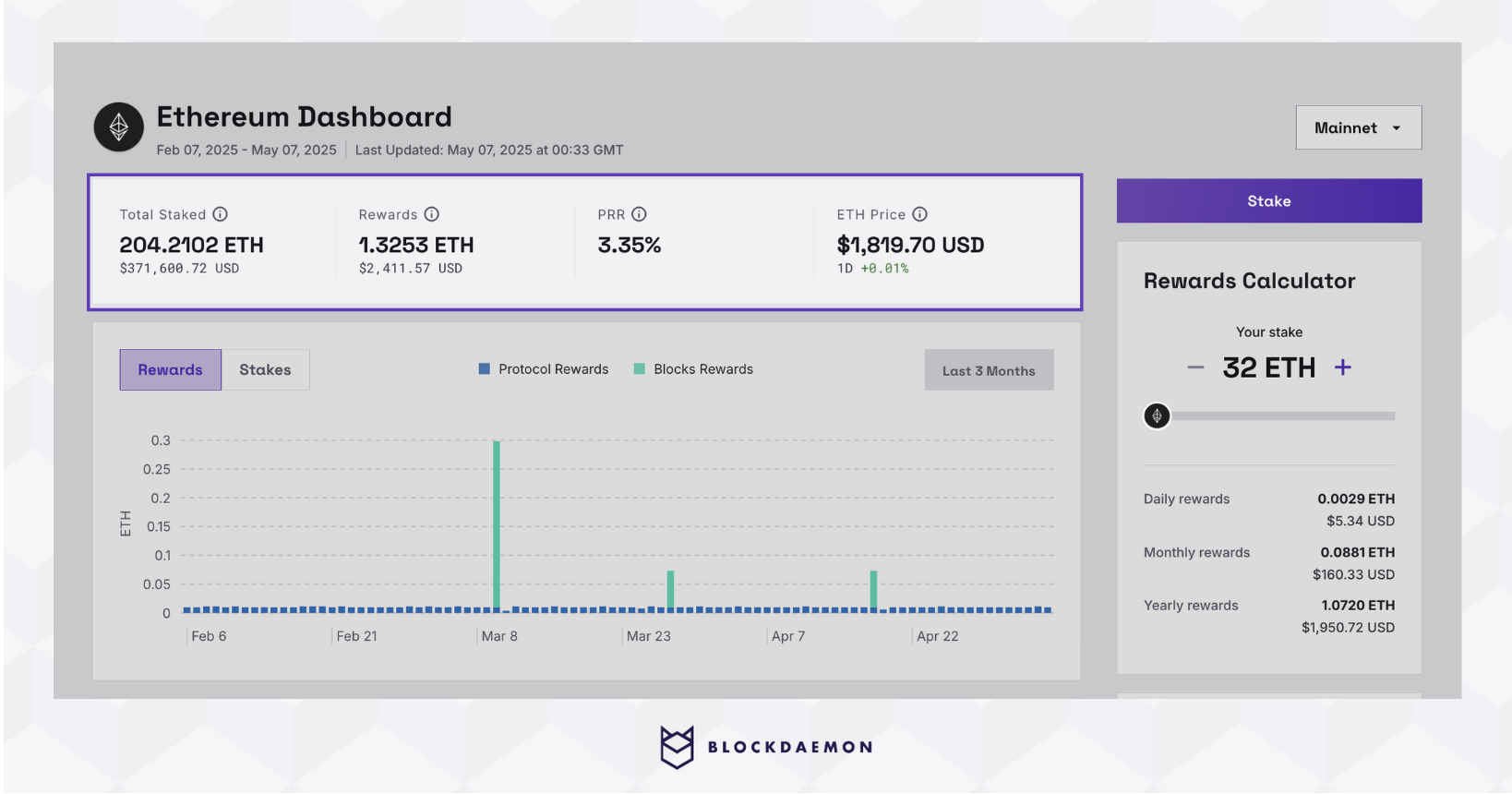
4. Stake & Exit
Stake ETH and exit validators directly from the dashboard. Now supports both default and custom configurations introduced with the Pectra upgrade.
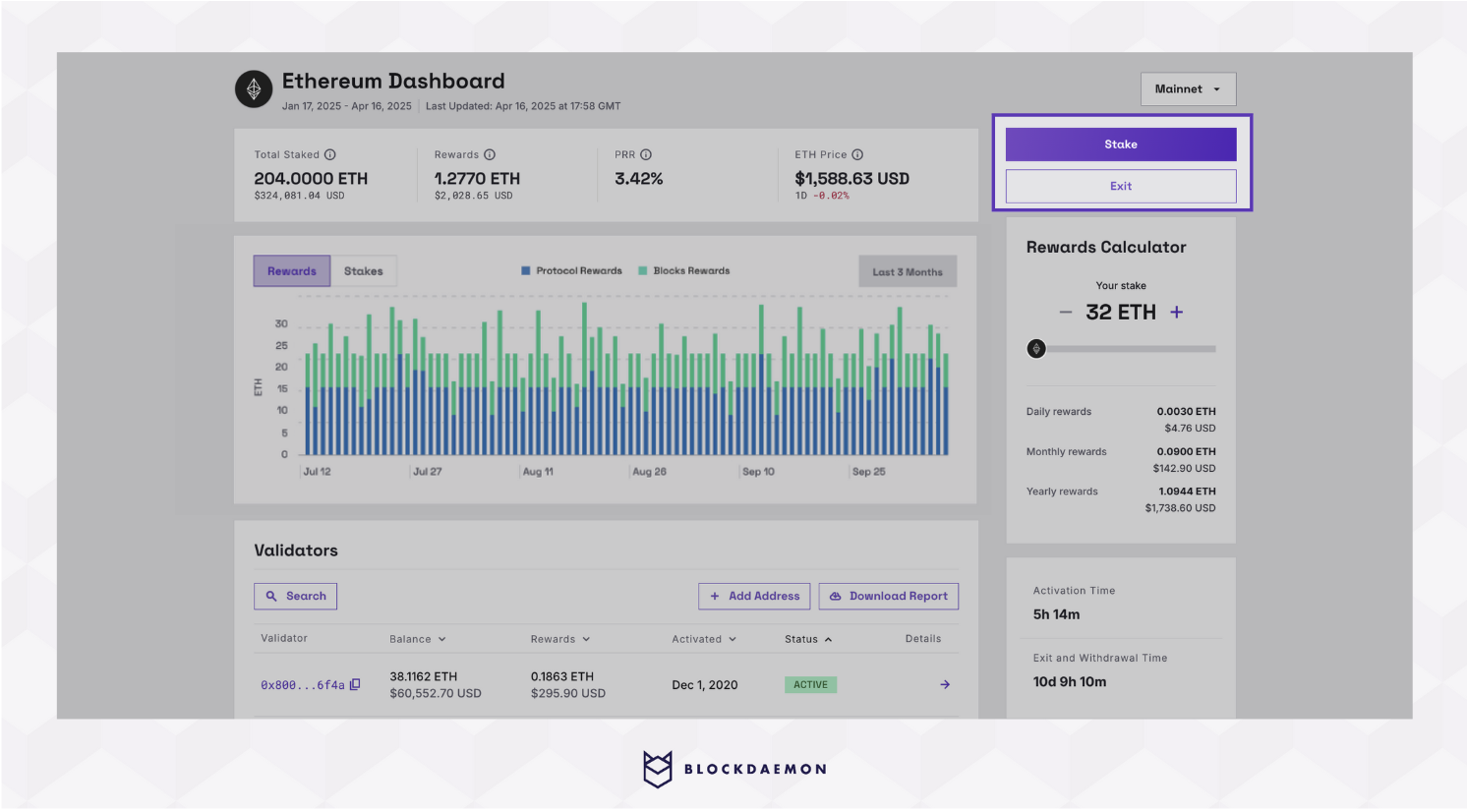
5. Charts
The charts give you a day-by-day breakdown of your rewards and stake over the past 90 days. Both charts include data on stakes, exits, and rewards earned by both Blockdaemon and non-Blockdaemon validators tracked on the dashboard, giving you a holistic view of your portfolio.
The rewards chart shows you a detailed breakdown of your rewards earned day-by-day with a clear breakdown of reward type. The data is updated every epoch (approximately every 6 minutes on Ethereum) and reflects rewards earned by active tracked validators.
The stakes chart shows you a summary of all stake and exit activity over the past 90 days across your tracked validators.
Dig further into the data by hovering over a specific day.

6. Validators Table
View details of tracked validators in the validators table. Validators that you delegate to through the Blockdaemon app or through the Blockdaemon Staking API are automatically tracked here.
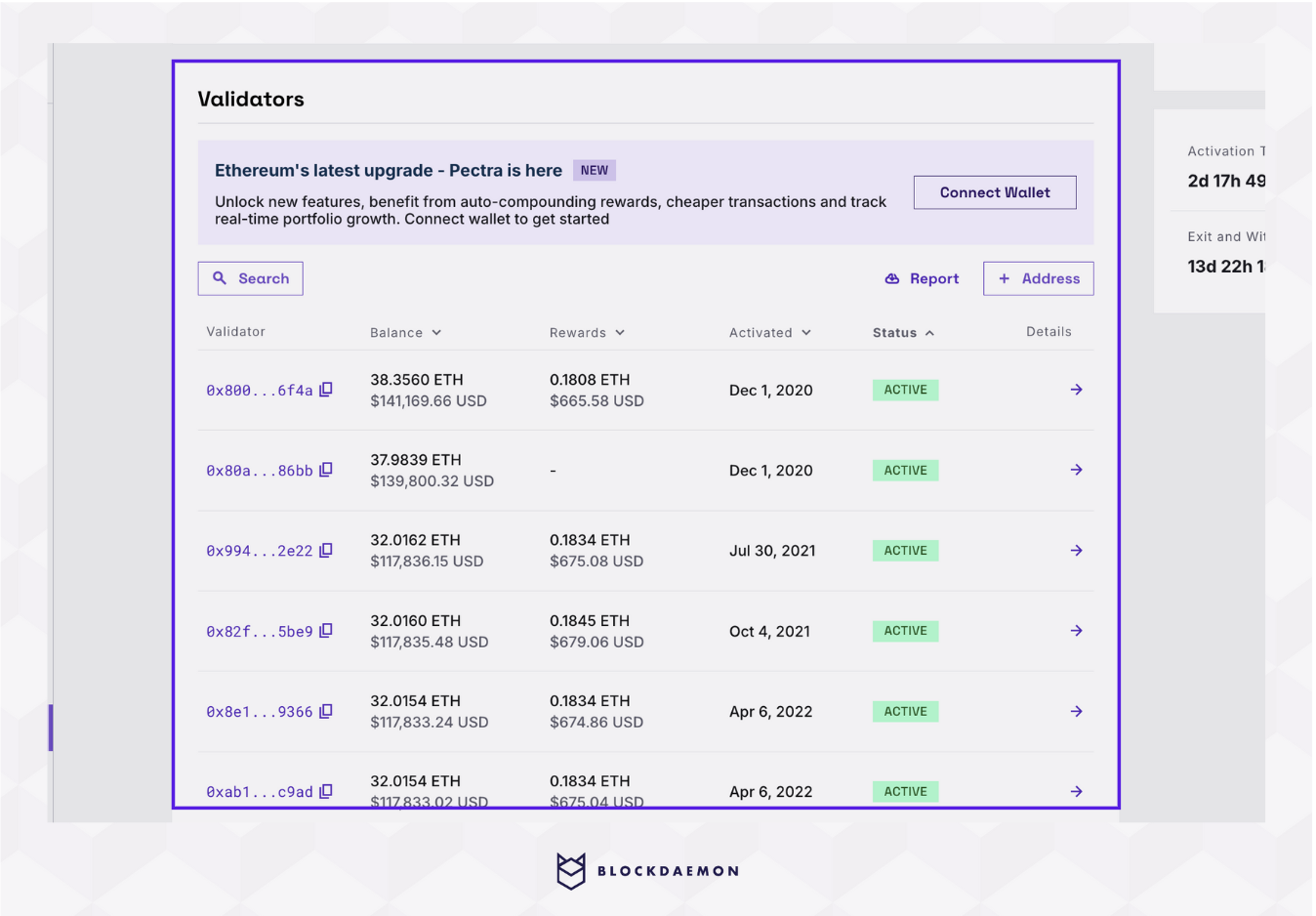
What you can do:
- Pagination: Easily navigate through an extensive list of validators. You can view up to 25 validators per page.
- Sort: Sort the list in ascending or descending order by activation date, balance, total rewards, or status.
- Search: Use the search feature to find a specific validator or group of validators easily.
- Add Validators: Track non-Blockdaemon validators (External validators) in the dashboard to give you a holistic view of your ETH staking portfolio by adding them to your tracked validators.
- Remove or Exit Validators: Open the validator modal by clicking the arrow icon in the validator’s row.
- For external validators, the modal includes an option to remove the validator..
- For Blockdaemon validators, the modal displays Exit Validator, which allows you to submit a voluntary exit request for the validator without the need to sign for the exit in your wallet.
Info:Learn more about validator statuses here.
7. Validator Modal
The validator modal gives you a clear view of your validator's details. It helps you monitor its performance, track its status, and execute actions like removing or exiting the validator.
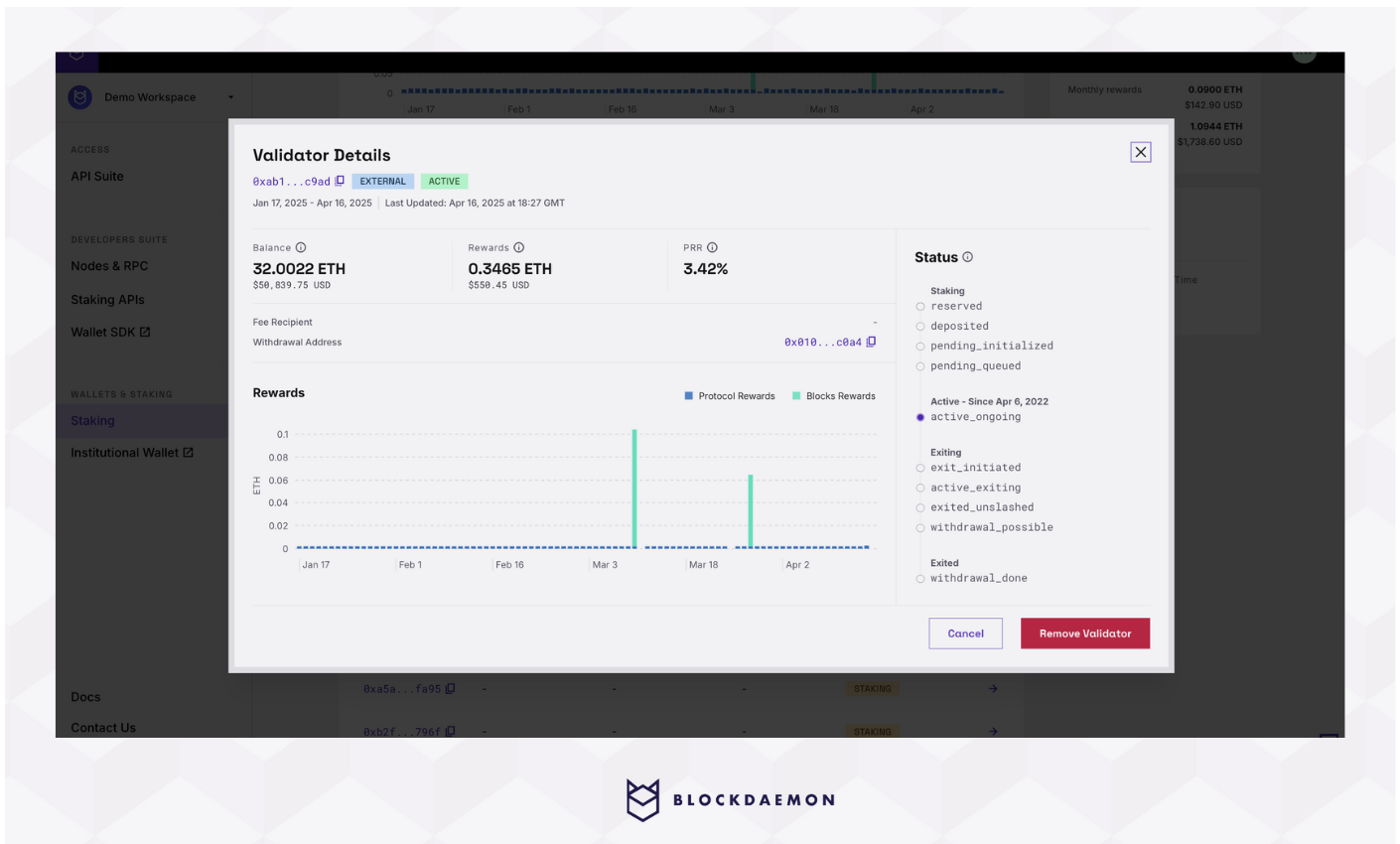
The validator modal includes:
- Rewards Chart: See insights from the 90-day data overview to understand performance over time.
- Summary Metrics: Check the current balance and total rewards earned by the validator you've selected.
- Tag: Validators are tagged to show whether they are managed externally or by Blockdaemon. External validators will have an
EXTERNALtag. - Status: View detailed on-chain validator statuses to know their current lifecycle state.
- Action Button
- External Validators: Displays Remove Validator, which removes the validator from the dashboard without affecting its subscription, earnings, or staked balance.
- Blockdaemon Validators: Displays Exit Validator, which allows you to submit a voluntary exit request for the validator.
8. Manage Validators
When you connect your wallet, the dashboard loads all validators linked to your withdrawal address. You’ll see your validators grouped by type:
- Compounding (0x02) — Automatically restake rewards.
- Non-Compounding (0x01) — Does not restake rewards.
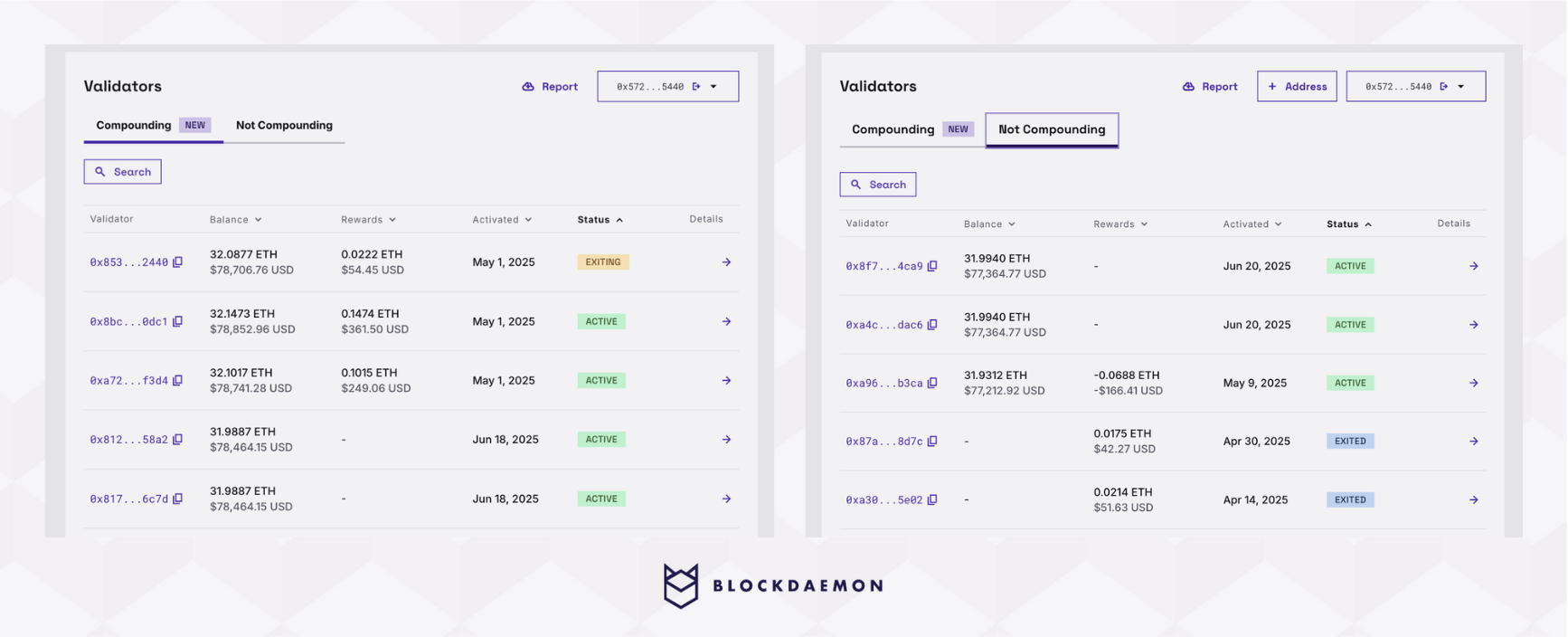
This view helps you monitor validator status and take action where needed. You can manage one or multiple validators at a time.
Available Management Actions:
- ✅Convert Validator
Convert a non-compounding (0x01) validator into a compounding (0x02) validator to access more staking features.- ✅Consolidate Validators
Combine multiple compounding validators into one for easier management and reward tracking.- ✅Top Up
Add more ETH to an existing compounding validator to maximize rewards and optimize performance.- ✅Withdraw Funds
Withdraw available ETH rewards from your validators.- ✅ Exit Validator
This feature is coming soon
9. Queue Estimation
Queue estimation helps determine how long you’ll wait to join or exit the network as a validator.
The Activation Queue Estimation manages how new validators join the network gradually. Your wait time depends on:
- Number of Validators in the Queue: The total number of validators waiting to join the network. More validators in the queue mean a longer wait.
- Churn Limit: The maximum number of validators activated per epoch based on the total number of active validators.
- Fixed Delay: A standard delay that applies to all validators to ensure fairness.
The Exit Queue Estimation helps control how many validators can exit the network at a time. Your wait time depends on:
- Randao Delay: A fixed delay for all validators before starting the exit process.
- Exit Queue: Time spent in the queue before exiting, depending on the number of validators ahead and the churn limit.
- Withdrawability Delay: A fixed delay after exiting before the validator can withdraw their stake.
The total wait time for a validator to exit the network can be broken down into two parts:
- Total Minimum Wait Time is the shortest time for a validator to exit and withdraw.
- Total Maximum Wait Time includes an additional time based on withdrawal processing speed (max sweep epochs).
Both the Activation Queue Estimation and Exit Queue Estimation return results in epochs.
10. Staking Report
Get reward data for thousands of validators in a single .csv file for easy analysis or accounting purposes. Reward data for the last 90 days is readily available in the UI or reach out to our sales team for longer time periods.
The report can be easily requested in your local timezone by selecting it from the dropdown.
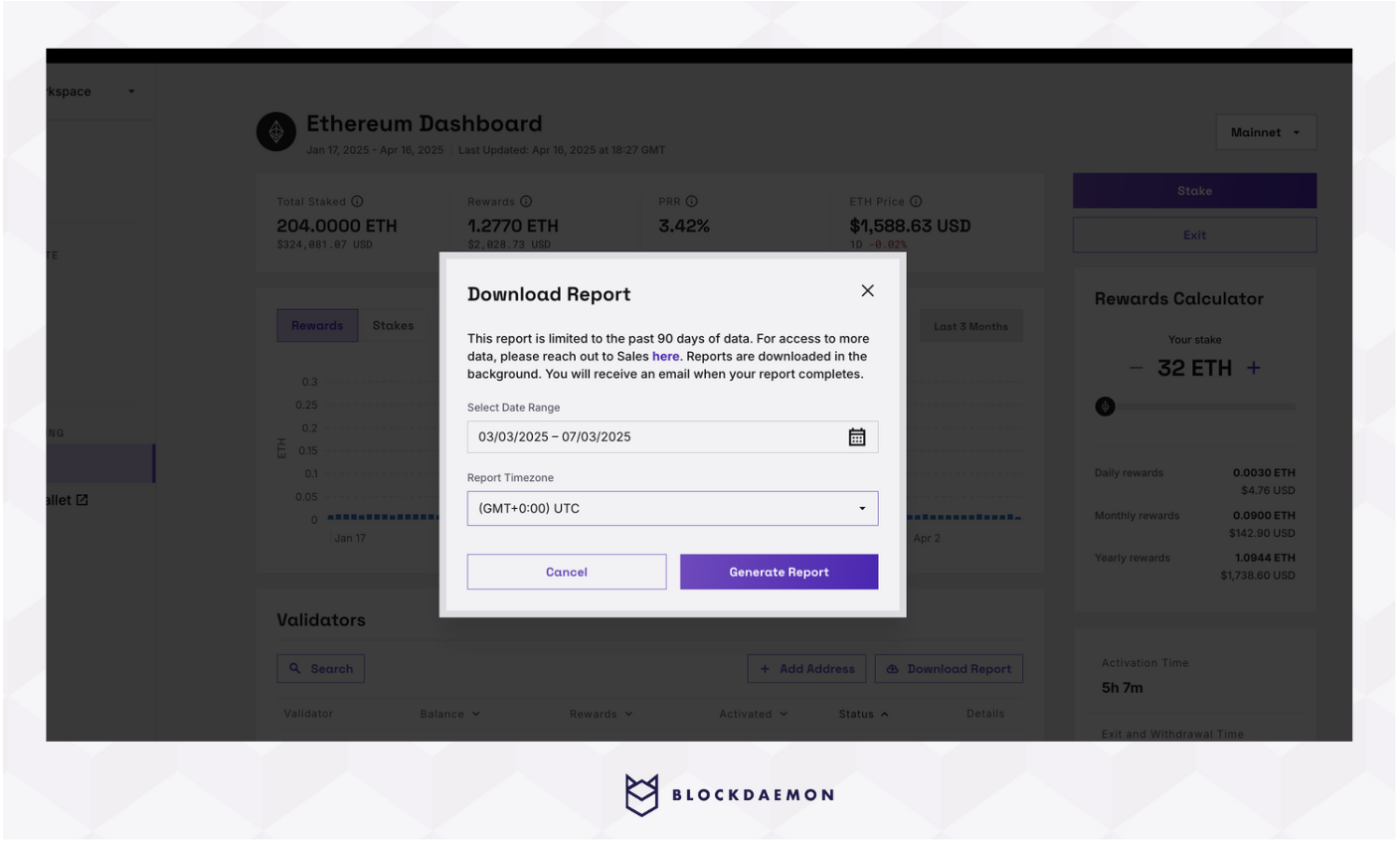
Info:Learn more at How to Download Staking report page.
11. Rewards Calculator
The Rewards Calculator helps you estimate the rewards you'll earn based on the amount of ETH you stake. It provides estimates in both ETH and USD, and you can view the rewards as a daily, monthly, or yearly time series. The estimates are based on the Estimated Protocol Reward Rate (PRR), which uses historical ETH staking reward data.
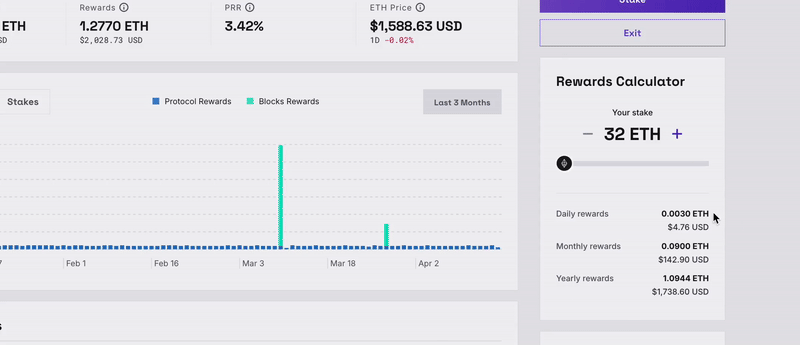
Note:This is not a guarantee of future reward rates.
👋 Need Help?
Contact us through email or our support page for any issues, bugs, or assistance you may need.
Updated 18 days ago
